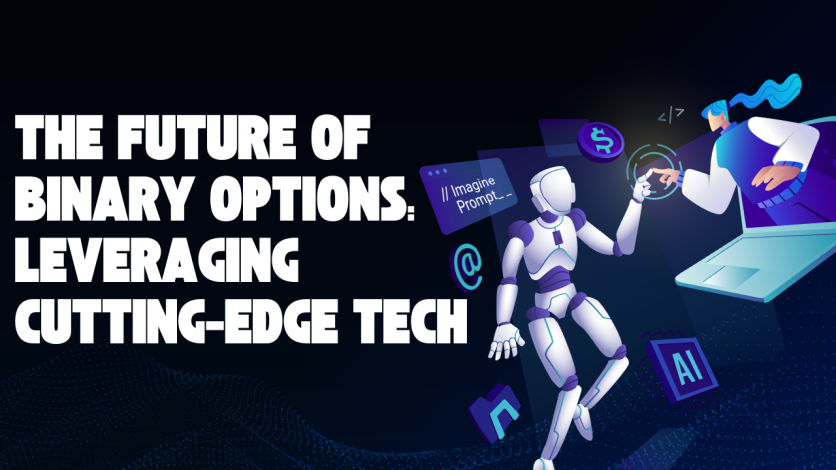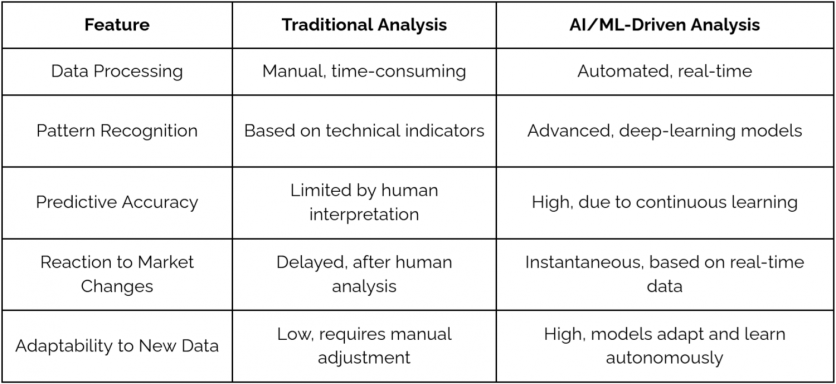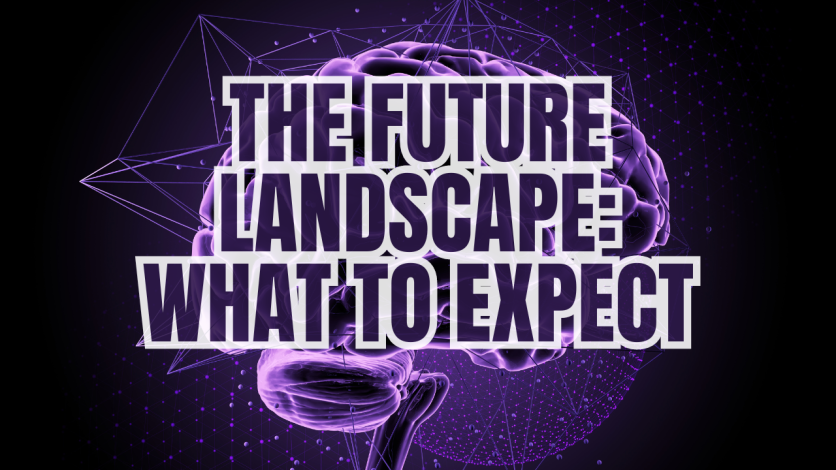
Binary options trading has evolved significantly since its inception, and today, it stands on the cusp of a technological revolution. With the integration of advanced technologies like artificial intelligence (AI), machine learning (ML), blockchain, and algorithmic trading, the future of binary options promises to be more dynamic, accessible, and potentially profitable.
This article explores how these cutting-edge technologies are reshaping the binary options landscape and what traders can expect in the near future.
1. The Role of Artificial Intelligence and Machine Learning
AI and ML in Market Analysis
Artificial Intelligence (AI) and Machine Learning (ML) are transforming the way traders analyze markets. Traditional market analysis relied heavily on historical data, technical indicators, and human intuition. However, with AI and ML, the analysis has become more sophisticated, allowing traders to identify patterns and trends that were previously undetectable.
AI algorithms can process vast amounts of data in real time, making sense of complex market movements and predicting future price directions. Machine learning models, on the other hand, continuously improve their predictions by learning from previous trades, market conditions, and external factors like geopolitical events.
Key Differences Between Traditional Analysis and AI/ML-Driven Analysis

Personalized Trading Strategies
AI and ML are not just enhancing market analysis; they are also paving the way for personalized trading strategies, such as a Quotex trading strategy, allowing traders to select the most technically efficient approach tailored to their behavior, risk tolerance, and market preferences. This level of personalization was unheard of in the traditional binary options trading environment.
For instance, if a trader prefers short-term trades with high volatility, the AI can recommend strategies that capitalize on quick market movements. Conversely, for those who prefer less risky, long-term positions, the AI can suggest more conservative strategies.
2. The Impact of Blockchain Technology
Enhanced Transparency and Security
Blockchain technology is another game-changer for the binary options market. Traditionally, transparency and security have been significant concerns in the trading world. Blockchain addresses these issues by providing a decentralized ledger that records all transactions in an immutable and transparent manner.
Every trade made on a blockchain-based binary options platform is recorded in a distributed ledger, which is accessible to all participants. This level of transparency ensures that no single entity can manipulate trade data, leading to a fairer trading environment.
Moreover, blockchain's inherent security features protect traders' funds and personal information from potential hacks. Smart contracts, which are self-executing contracts with the terms of the agreement directly written into code, further enhance the security and efficiency of transactions.
Decentralized Trading Platforms
Blockchain also enables the creation of decentralized platforms, which operate without the need for a central authority. These platforms provide a peer-to-peer trading environment where users can trade directly with each other, reducing the reliance on brokers and eliminating intermediaries' fees.
Decentralized platforms also offer greater privacy, as traders do not need to share their personal information with a central authority. This privacy is especially appealing to traders who value anonymity and security.
Centralized vs. Decentralized Binary Options Platforms

3. Algorithmic Trading: Speed and Precision
Automated Trading Systems
Algorithmic trading, which uses computer programs to execute trades at high speed, is becoming increasingly popular in binary options trading. These systems can analyze market conditions and execute trades in a fraction of a second, a speed that is impossible for human traders to achieve.
Automated systems can follow predefined strategies or adapt to market conditions in real time. This adaptability allows traders to take advantage of market opportunities as soon as they arise without the delay associated with manual trading.
Risk Management
One of the significant advantages of algorithmic trading is its ability to manage risk effectively. These systems can monitor multiple markets simultaneously, ensuring that a trader's portfolio remains balanced and that risk is minimized. For example, if a particular trade goes against the predicted direction, the algorithm can automatically close the position to prevent further losses.
Furthermore, algorithmic systems can be programmed to follow strict risk management rules, such as setting stop-loss orders or limiting the amount of capital allocated to a single trade. This level of precision helps protect traders from significant losses, making binary options trading safer and more predictable.
4. The Integration of Big Data Analytics

Data-Driven Decision Making
The future of binary options trading will increasingly rely on big data analytics. Big data refers to the vast amount of structured and unstructured data generated daily, including market data, social media activity, news reports, and more. By analyzing this data, traders can make more informed decisions and improve their strategies.
Big data analytics allows traders to identify correlations between different markets, predict price movements, and even anticipate market sentiment. For instance, a sudden surge in social media mentions of a particular asset could indicate an upcoming price movement, allowing traders to capitalize on the trend before it fully materializes.
Sentiment Analysis
Sentiment analysis, a subset of big data analytics, is particularly valuable in binary options trading. This technique involves analyzing text data from social media, news articles, and forums to gauge public sentiment toward a specific asset. Positive sentiment can indicate a potential price increase, while negative sentiment may suggest a decline.
Traders can use sentiment analysis tools to monitor market sentiment in real time, adjusting their strategies accordingly. This proactive approach can give traders a significant edge in the fast-paced world of binary options trading.
5. The Emergence of Predictive Analytics
Anticipating Market Movements
Predictive analytics, powered by AI and big data, is set to revolutionize binary options trading. This technology uses historical data, market trends, and other relevant factors to forecast future market movements. By leveraging predictive analytics, traders can anticipate price changes with greater accuracy, leading to more successful trades.
Predictive models can analyze various factors, including economic indicators, geopolitical events, and even weather patterns, to predict how they will impact asset prices. This holistic approach to market analysis enables traders to make more informed decisions and reduces the reliance on guesswork.
Adaptive Learning Models
Another exciting development in predictive analytics is the use of adaptive learning models. These models continually learn from new data, adjusting their predictions based on the latest market conditions. As a result, traders benefit from up-to-date and highly accurate forecasts, allowing them to stay ahead of the competition.
Adaptive learning models are particularly useful in volatile markets, where conditions can change rapidly. By continuously updating their predictions, these models help traders navigate uncertainty and make more informed decisions.
6. The Future Landscape: What to Expect

Increased Accessibility
One of the most promising aspects of these technological advancements is the increased accessibility of binary options trading. With AI-powered platforms, blockchain-based security, and algorithmic trading systems, even novice traders can participate in the market with confidence. The democratization of trading tools and strategies means that more people can access the potential benefits of binary options trading.
Regulation and Compliance
As technology evolves, regulatory bodies are also likely to adapt, ensuring that the binary options market remains fair and transparent. We can expect stricter regulations on AI algorithms, blockchain platforms, and data analytics tools to protect traders and maintain market integrity. This increased oversight will further boost trader confidence and contribute to the market's long-term growth.
The Rise of Hybrid Platforms
Looking ahead, we may see the emergence of hybrid platforms that combine the best features of centralized and decentralized systems. These platforms could offer the security and transparency of blockchain technology while maintaining the ease of use and customer support provided by traditional brokers. Hybrid platforms would provide traders with a balanced environment, offering both privacy and reliability.
Conclusion
The future of binary options trading is bright, driven by cutting-edge technologies that enhance market analysis, increase transparency, and improve trading efficiency. As AI, blockchain, algorithmic trading, and big data analytics continue to evolve, traders will have access to more powerful tools and strategies, leveling the playing field and opening up new opportunities.
For traders looking to stay ahead of the curve, embracing these technologies is not just an option—it's a necessity. The binary options market is evolving, and those who leverage the latest advancements will be well-positioned to capitalize on the future of trading.
ⓒ 2025 TECHTIMES.com All rights reserved. Do not reproduce without permission.




